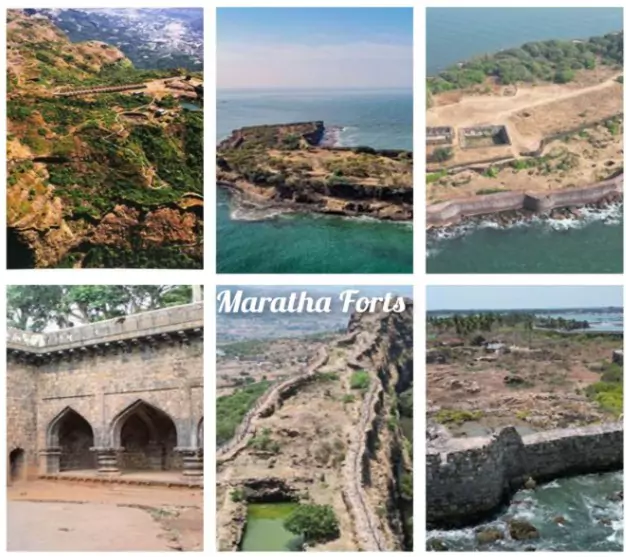At the 47th Session of the World Heritage Committee, held in Paris, India’s nomination — Maratha Military Landscapes of India — was inscribed into the UNESCO World Heritage List.
- The nomination was made for the 2024–25 cycle and was selected after an 18-month rigorous evaluation involving advisory bodies like ICOMOS.
India’s Position on Global Heritage Map
- India Ranks 6th globally and 2nd in Asia-Pacific in terms of World Heritage Sites.
- Italy holds the most UNESCO World Heritage sites globally with 60, while China has the largest number in the Asia-Pacific region with 59.
- 62 sites are currently on India’s Tentative List.
- One site per year can be proposed by each country for inscription.
- Archaeological Survey of India (ASI) is the nodal body for World Heritage matters.
Recent Developments
- In 2023, the Moidams of Charaideo (Assam) were inscribed during the 46th Session in New Delhi.
- India is currently a member of the World Heritage Committee (2021–2025).
- The World Heritage Committee was established under the Convention for the Protection of the World Cultural and Natural Heritage (World Heritage Convention) adopted by the General Conference of UNESCO at its seventeenth session on 16 November 1972.
- The World Heritage Committee (21 State Parties elected by UNESCO) implements the World Heritage Convention, decides site inscriptions, monitors conservation, and allocates funds from the World Heritage Fund.
|
About this Recognition
- This is India’s 44th World Heritage Site.
- 41st World Heritage Site (2023): Santiniketan, a town in West Bengal
- 42nd World Heritage Site (2023): The Sacred Ensembles of the Hoysala
- 43rd World Heritage Site (2024): The Mound-Burial System of Ahom Dynasty
- Cultural Sites: 36
- Natural Sites: 7
- Mixed Site: 1 (Khangchendzonga National Park, Sikkim)
- Recognized under Criteria (iv) & (vi):
- (iv): Architectural/technological ensemble illustrating a significant stage in history.
- (vi): Associated with living traditions, historic events, or artistic works.
- Significance of the Recognition
- Showcases India’s rich regional heritage, military ingenuity, and adaptive use of geography.
- Demonstrates Outstanding Universal Value (OUV) across cultural criteria.
- Reflects India’s efforts to globalize its cultural heritage and boost recognition of Bharat’s historical continuity.
About The Military Landscapes of the Marathas
- Origin: The Maratha military landscape was established during the reign of Chhatrapati Shivaji Maharaj, in 1670 CE and persisted through successive rulers until 1818.
 Comprises: 12 forts spanning 17th–19th centuries CE, reflecting strategic vision and architectural ingenuity of the Maratha Empire.
Comprises: 12 forts spanning 17th–19th centuries CE, reflecting strategic vision and architectural ingenuity of the Maratha Empire. -
- Maharashtra (11 forts): Salher, Shivneri, Lohgad, Khanderi, Raigad, Rajgad, Pratapgad, Suvarnadurg, Panhala, Vijaydurg, & Sindhudurg
- Tamil Nadu (1 fort): Gingee Fort
- Protection Status
- Protected by ASI: Shivneri, Lohgad, Raigad, Suvarnadurg, Panhala, Vijaydurg, Sindhudurg, Gingee
- Protected by Maharashtra Government: Salher, Rajgad, Khanderi, Pratapgad
Fort Typology Based on Terrain
- Hill Forts: Salher, Shivneri, Lohgad, Raigad, Rajgad, Gingee
- Hill-Forest Fort: Pratapgad
- Hill-Plateau Fort: Panhala
- Coastal Fort: Vijaydurg
- Island Forts: Khanderi, Suvarnadurg, Sindhudurg
|
- Significance:
-
- Strategic Utilization of Terrain: These networks exemplify how the existing terrain was utilized by the Maratha army to develop guerrilla warfare strategies.
- These strategies were instrumental in countering the imperial might of the Mughals on the landward side and European coastal powers from the seaward side.
- A Unique Military Legacy: In the context of India’s military landscape, the Maratha Empire’s warfare strategy emerges as a unique and noteworthy example with the potential to be showcased to the world.
United Nations Educational, Scientific and Cultural Organization (UNESCO)
- It is a specialized agency of the United Nations.
- Established in 1945.
- Headquartered in Paris.
- Dedicated to fostering international collaboration, UNESCO strives to promote peace and security by advancing educational, scientific, and cultural reforms.
- With 194 member states and 12 associate members, UNESCO counts India among its founding members.
Criteria under World Heritage List Nomination by UNESCO
- The nomination process for the World Heritage List involves two categories: Cultural and Natural criteria.
- The Maratha Military Landscapes of India fall under the cultural criteria category.
- There are six criteria (i to vi) for cultural sites and four criteria (vii to x) for natural sites to be considered for inclusion in the World Heritage List.
|
Read More About: World Heritage Committee
![]() 12 Jul 2025
12 Jul 2025

 Comprises: 12 forts spanning 17th–19th centuries CE, reflecting strategic vision and architectural ingenuity of the Maratha Empire.
Comprises: 12 forts spanning 17th–19th centuries CE, reflecting strategic vision and architectural ingenuity of the Maratha Empire. 